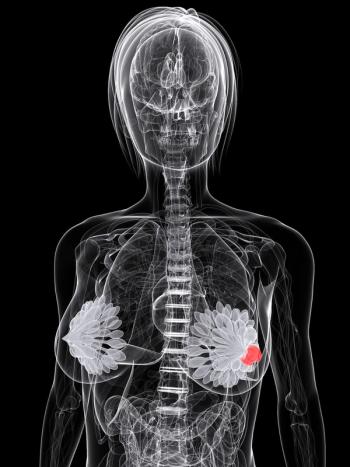
FDA Accepts New Drug Application for Poziotinib in HER2 Exon 20+ NSCLC
A new drug application has been accepted by the FDA for poziotinib in patients with advanced or metastatic non–small cell lung cancer with HER2 exon 20 insertion mutations.
The FDA has accepted a new drug application (NDA) for poziotinib, for patients with advanced or metastatic non–small cell lung cancer (NSCLC) who have HER2 exon 20 insertion mutations, according to a press release from Spectrum Pharmaceuticals.1
The acceptance of the application comes from cohort 2 findings of the phase 2 ZENITH20 study (NCT03318939), in which the drug was assessed in patients with HER2 exon 20–mutant NSCLC following previous therapies. Investigators noted that there are currently no FDA approved treatments for this population. The FDA has noted the importance of providing additional information about the dosing regimen and conducting a confirmatory trial with substantial enrolled at the time of approval.
A Prescription Drug User Fee Act date has been set for November 24, 2022.
“The NDA acceptance is a major step toward advancing the treatment for patients with HER2 exon 20 insertion mutations in lung cancer. This remains an area of high unmet medical need as there are no treatments specifically approved for these patients. We are actively working with the agency to support the review process,” Tom Riga, President and Chief Executive Officer of Spectrum Pharmaceuticals, said in a press release.
A total of 90 patients were included in cohort 2, with a median age of 60 years. Additionally, 64.4% of patients were female and 65.6% were never-smokers.2 A total of 96.7% of patients had adenocarcinoma histopathology, 3.3% had squamous cell carcinomas, and 15.6% had stable central nervous system metastases. All patients in the study had received between 1 to 6 previous lines of treatment, including platinum chemotherapy (96.7%), immune checkpoint inhibitors (67.8%), anti-HER2 therapy (27.8%), and chemotherapy plus a checkpoint inhibitor (65.6%).
Patients were treated with 16 mg of oral poziotinib daily for a 28-day cycle up to 24-months.
The median follow-up was 9.0 months and, with 1 patient receiving ongoing treatment. Patients discontinued treatment because of either progressive disease (58.9%) or adverse effects (AEs; 14.4%).
The overall response rate (ORR) was 27.8% (95% CI, 18.9%-38.2%), and 25 patients had a partial response. The disease control rate (DCR) was 70.0% (95% CI, 59.4%-79.2%). The ORR and DCR in the evaluable population were 35.1% (95% CI, 24.4%-47.1%) and 82.4% (95% CI, 71.8%-90.3%), respectively. Tumor shrinkage was seen in 74.4% of those in the as-treated population, and 90.5% in the evaluable population.
The median time to response among the responders was 32 days, and the duration of response (DOR) was 5.1 months (95% CI, 4.2-5.5). Moreover, 24% of patients had a DOR of no longer than 6 months. For all patients, the median progression-free survival (PFS) was 5.5 months (95% CI, 3.9-5.8), and the 6-month PFS was 37.8% (95% CI, 25.5%-50.0%).
Treatment-emergent AEs (TEAEs) were observed in 88 patients, with 71 having grade 3 AEs and 4 having grade 4 AEs. Grade 3 or higher treatment-related AEs (TRAEs) included rash (48.9%), diarrhea (25.6%), and stomatitis (24.4%). One or more patients had serious TRAEs such as rash (3.3%), asthenia (2.2%), diarrhea (2.2%), dehydration (2.2%), and stomatitis (2.2%). Additionally, 4 patients had grade 4 stomatitis, dyspnea, hypomagnesemia, hypocalcemia,and pancreatitis relapse. One patient had grade 5 pneumonia.
Serious TRAEs occurred in 14.4% of patients, and 12 patients had discontinued treatment permanently because of TRAEs.
References
1. Spectrum Pharmaceuticals announces acceptance of new drug application filing for poziotinib. News Release. Spectrum Pharmaceuticals. February 11, 2022. Accessed February 16, 2022. https://bit.ly/3oPK3yQ
2. Le X, Cornelissen R, Garassino M, et al. Poziotinib in non-small-cell lung cancer harboring HER2 exon 20 insertion mutations after prior therapies: ZENITH20-2 trial. Published Online November 29, 2021. J Clin Oncol. 2021;JCO2101323. doi:10.1200/JCO.21.01323
Newsletter
Stay up to date on recent advances in the multidisciplinary approach to cancer.
















































































